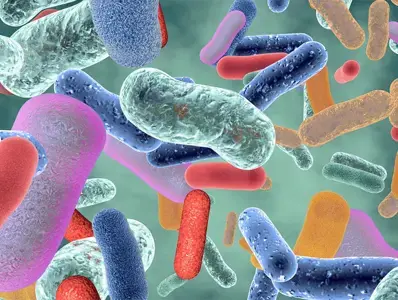[Literature library] Complexity in HMO mixture composition and gut ecosystem

A recently published in vitro study demonstrated that infant gut ecosystem may benefit from more diverse human milk oligosaccharides (HMOs) mixtures, which would support various bifidobacterial communities and may safeguard the gut barrier from pro-inflammatory imbalances.
Study design
In vitro models
- Baby M-SHIME®: to mimic the microbial ecosystem
- Caco-2 / HT29-MTX co-culture: to mimic the intestinal epithelium
Control condition
- Baseline values after 14-day fecal inocula stabilization before treatment period
Treatment groups
- Lactose
- 2’-FL
- 2’-FL + LNnT
- A mixture of 6 HMOs (6-HMO): 2’-FL, LNT, LNnT, DFL, 3’-SL, 6’-SL
Results
Bifidogenic environment and metabolic shift
- Only 2’-FL + LNnT and 6-HMO increased bifidobacteria levels when compared to the control condition
- All HMO groups promote short-chain fatty acid (SCFA) production when compared to baseline, without increasing gas level
Microbial modulation in luminal compartment
- HMOs demonstrated distinct impacts on various gut microbiota members
- 2’-FL increased levels of Bifidobacteriaceae (Bifidobacterium) and Coriobacteriaceae (Collinsella)
- 2’-FL + LNnT increased level of Brucellaceae (Ochrobactrum)
- 6-HMO increased level of Ruminococcaceae (Faecalibacterium)
- All HMO groups demonstrated a consistent effect of reducing the Veillonellaceae family, which was particularly observed in the distal colon 6-HMO treated reactor across the 3-week treatment
- Increase in Bifidobacteriaceae and Ruminococcaceae levels were specific for 6-HMO, which was the only treatment that showed an increase in Bacteroidaceae levels from the 2nd week of treatment until the end of the assay
- Specific operational taxonomic unit (OTU) enrichment in the luminal compartment depended on the treatment
- Lactose enriched OTU1 (Megamonas sp.), OTU2 (Bifidobacterium longum) and OTU31 (Allistipes finegoldi)
- 2’-FL was associated with high abundance of OTU3 (Bifidobacterium adolescentis), OTU29 (Collinsella aerofaciens) and OTU38 (Sutterella sp.)
- 2’-FL + LNnT enriched OTU36 (Clostridium sp.)
- 6-HMO predominantly and consistently enriched OTU20 (Faecalibacterium prausnitzii) and OTU35 (Bifidobacterium dentium)
Microbial modulation in mucosal compartment
- 2’-FL + LNnT and 6-HMO had a consistent and strong effects of reducing Megamonas abundance at the genus level after the second week of the treatment
- At OTU level,
- Lactose showed enrichment in OTU2 (Bifidobacterium longum) and OTU7 (Clostridium clostridioforme)
- 2’-FL showed enrichment in OTU29 (Collinsella aerofaciens) and OTU31 (Allistipes finegoldi)
- 2’-FL + LNnT showed enrichment in OTU9 (Bifidobacterium bifidum) and OTU36 (Clostridium sp.)
- 6-HMO showed enrichment in OTU10 (Roseburia inulinivorans) and OTU63 (Ruminococcus lactaris)
- 6-HMO demonstrated the fastest and highest bifidogenic potential overall
Protection of intestinal barrier from a pro-inflammatory challenge
- Before the pro-inflammatory challenge, incubation with 6-HMO supernatants showed significantly higher mean trans-epithelial electrical resistance (TEER) values than in control cells (Refer to fresh, unfermented culture SHIME® media)
- After the pro-inflammatory challenge, TEER drop was significantly prevented by incubation with supernatants from Baby M-SHIME® dosed with 2’-FL + LNnT and 6-HMO
- FD4 assay further confirmed the protective effect of HMOs on intestinal barrier functions against pro-inflammatory challenge
Conclusion
The study suggests that increasing the complexity of HMO composition would be beneficial to the developing infants’ gut ecology as:
- Bifidobacterial communities may be promoted
- The gut barrier may be protected from pro-inflammatory imbalances
Abbreviations
2’-FL = 2’-Fucosyllactose; LNnT = Lacto-N-Neotetraose; LNT = Lacto-N-Tetraose; DFL = Difucosyllactose; 3’-SL = 3’-Sialyllactose; 6’-SL = 6’-Sialyllactose
Link to the full article:
https://www.ncbi.nlm.nih.gov/pmc/articles/PMC9227761/pdf/nutrients-14-02546.pdf
Reference:
Natividad JM et al. Human milk oligosaccharides and lactose differentially affect infant gut microbiota and intestinal barrier in vitro. Nutrients. 2022;14(12):2546.
Other articles that you might be interested in:
- [Infographic] HMO Diversity
- [Video] Understanding Human Milk Oligosaccharides (HMOs) Diversity in Human Milk – Ms. Jodi Bettler
WYE-EM-092-JUL-22